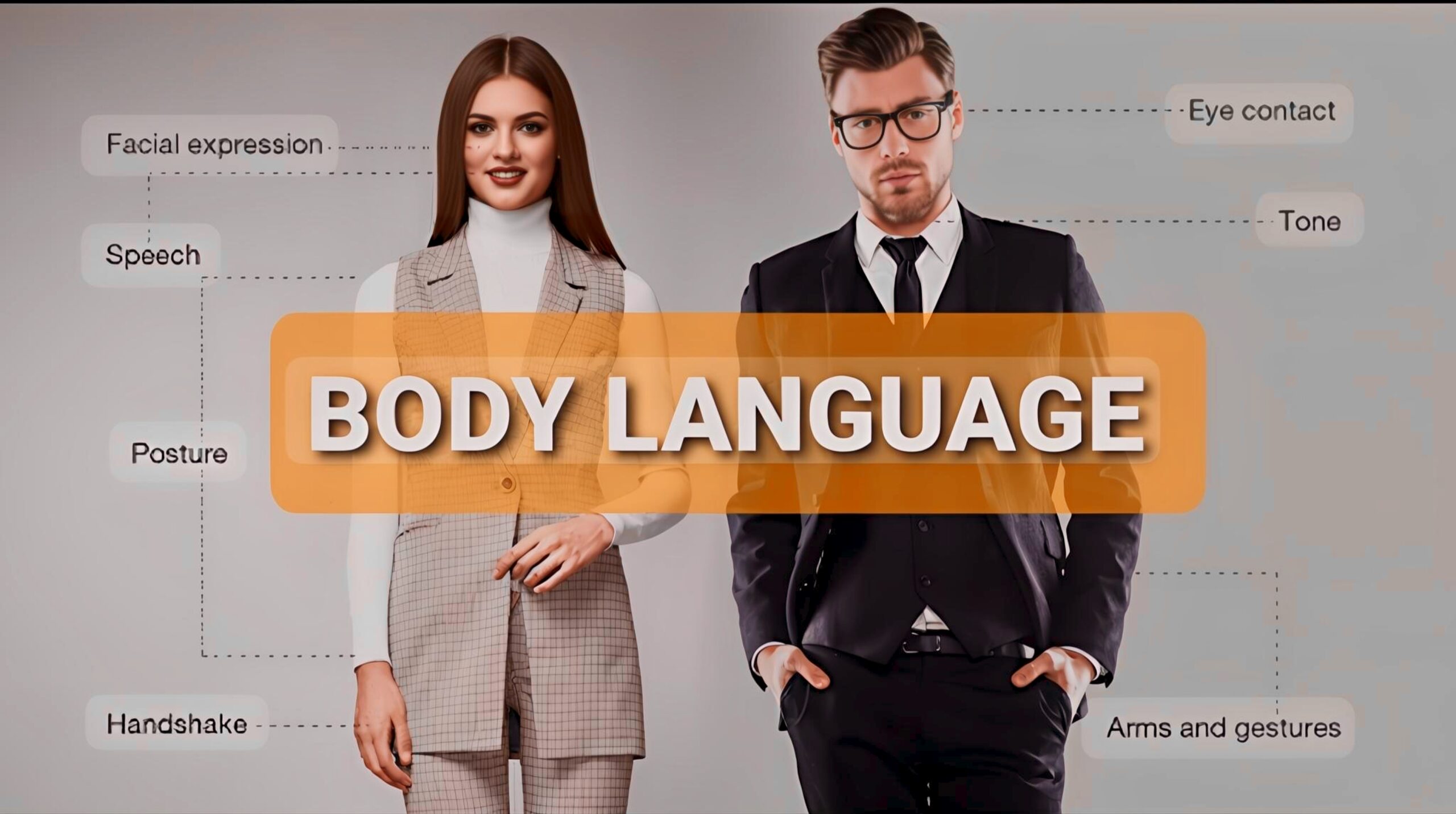Introduction
Did you know that 93% of communication is nonverbal? That means your words only account for 7% of what people perceive—your tone, facial expressions, and gestures do the rest.
Body language is a silent yet powerful tool that influences relationships, careers, and social interactions. Whether you’re giving a presentation, attending a job interview, or negotiating a deal, understanding body language can give you a competitive edge.
We’ll explore:
✅ The science behind body language
✅ Key body language cues and their meanings
✅ How to improve your nonverbal communication
✅ Common body language mistakes to avoid
By the end, you’ll know how to read others better and project confidence in any situation.

The Science Behind Body Language
Body language, or kinesics, is the study of nonverbal signals like posture, gestures, and facial expressions. Researchers like Albert Mehrabian found that:
- 55% of communication comes from body language
- 38% from tone of voice
- 7% from spoken words
This means even if you say the right things, poor body language can send the wrong message.
Why Body Language Matters
- First Impressions Are Instant – People judge you within 7 seconds of meeting you.
- Emotions Are Contagious – Smiling and open postures make others feel at ease.
- Power Dynamics – Confident body language can make you appear more authoritative.
Key Body Language Cues & What They Mean
1. Eye Contact
- Strong eye contact = Confidence, honesty, engagement
- Avoiding eye contact = Nervousness, dishonesty, disinterest
- Too much eye contact = Intimidation or aggression
Pro Tip: Maintain eye contact 60-70% of the time for a natural, confident impression.
2. Facial Expressions
- Smiling = Approachability, friendliness
- Frowning or tight lips = Disapproval, stress
- Raised eyebrows = Surprise or curiosity
Fun Fact: A genuine smile (Duchenne smile) involves the eyes, while a fake one only uses the mouth.
3. Posture & Stance
- Standing tall with shoulders back = Confidence, authority
- Slouching = Low energy, insecurity
- Crossed arms = Defensiveness or discomfort
Power Pose Trick: Before a big meeting, try the “Wonder Woman pose” (hands on hips) to boost confidence.
4. Hand Gestures
- Open palms = Honesty, openness
- Pointing fingers = Aggression
- Hands in pockets = Nervousness or lack of engagement
Bonus: Using hand gestures while speaking makes you more persuasive.
5. Personal Space (Proxemics)
- Intimate zone (0-18 inches) = Close friends, family
- Personal zone (1.5-4 feet) = Casual conversations
- Social zone (4-12 feet) = Formal interactions
Warning: Invading someone’s personal space can make them uncomfortable.

How to Improve Your Body Language
1. Practice Power Posing
Studies show that holding a power pose (like standing tall with hands on hips) for 2 minutes increases testosterone (confidence hormone) and reduces cortisol (stress hormone).
2. Mirror Others (Subtly)
Mirroring someone’s body language builds rapport and trust. If they lean in, you lean in. If they smile, you smile.
3. Control Nervous Habits
- Avoid fidgeting, nail-biting, or touching your face.
- Keep your hands relaxed instead of crossing them.
4. Use the “Triangular Gaze” Technique
Instead of staring directly, shift your gaze between their eyes and mouth to appear more natural.
5. Record Yourself
Watch videos of your speeches or conversations to spot awkward gestures or posture issues.

Common Body Language Mistakes to Avoid
❌ Looking at Your Phone – Signals disinterest.
❌ Weak Handshake – Suggests lack of confidence.
❌ Fidgeting – Makes you appear nervous or untrustworthy.
❌ Over-Nodding – Can seem insincere or desperate to please.
❌ Standing Too Close – Invades personal space.
Body Language in Different Scenarios
1. Job Interviews
✅ Sit up straight, lean slightly forward.
✅ Maintain steady eye contact.
✅ Nod occasionally to show engagement.
2. Public Speaking
✅ Use open gestures to appear confident.
✅ Move naturally instead of standing rigidly.
✅ Pause and breathe to avoid rushed speech.
3. Negotiations & Business Meetings
✅ Keep hands visible (no crossed arms).
✅ Mirror the other person’s energy level.
✅ Use slow, deliberate movements to appear in control.
4. Dating & Social Settings
✅ Smile genuinely.
✅ Lean in slightly to show interest.
✅ Avoid checking your phone.
Final Thoughts
Mastering body language is like learning a secret code that helps you communicate more effectively. By being aware of your gestures, posture, and expressions, you can:
✔ Build stronger relationships
✔ Boost your confidence
✔ Influence others positively
Now it’s your turn! Try observing people’s body language today—what do their gestures reveal? Let me know in the comments!
